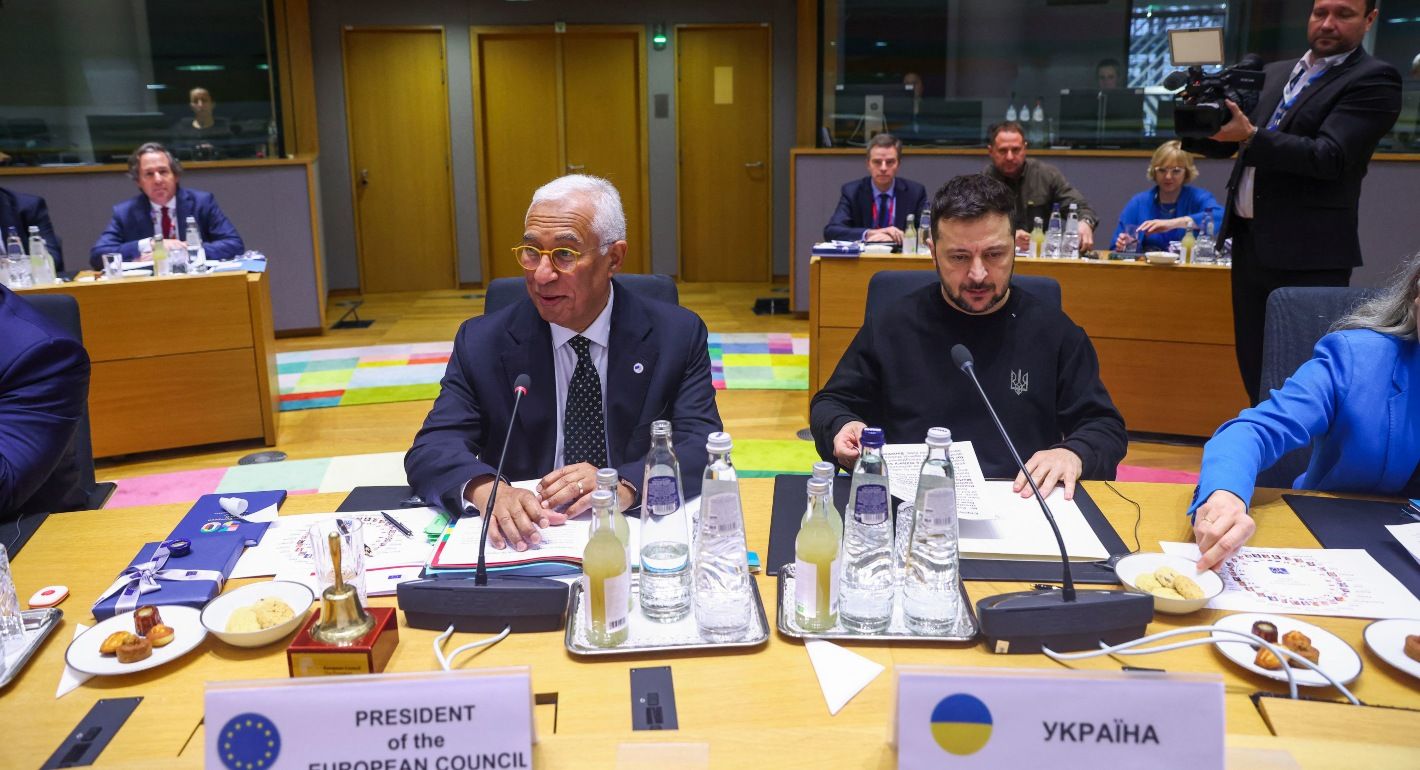Now that U.S. President Donald Trump has been inaugurated and his aides are working at pace to arrange a meeting with Russian President Vladimir Putin, Europeans need to quickly present the White House with a clear strategy and plan to secure Ukraine.
The main goal should remain to inflict a strategic defeat on Russia. This does not necessarily mean Ukraine regaining occupied territory but rather convincing Russian elites that the war’s main aims—the erasure of Ukraine as a sovereign nation—is unattainable and will cost Russia a prohibitive price. Increased political, economic, and military pressure should aim at breaking up Russia’s economy and dismantling the Putin regime. Short of that, the suboptimal option is to push for an end of hostilities along the current frontlines and to dictate to Putin the conditions for peace.
If Europeans want to have a say on the continent’s postwar security, their four-point proposal should include strategy, more military support, a plan for troop deployments after the ceasefire, and the restructuring of U.S. military presence in Europe.
First, there should be no preconditions to freezing the frontlines. There is nothing to be negotiated with Russia beyond freezing the front and ceasing the hostilities. Kyiv cannot be deprived of the sovereign right to decide whether to join the EU and NATO in the future. Europeans should not allow Russia to impose any changes to Ukraine’s internal organization or legally accept the annexation of Ukrainian territories. Equally, they should not engage with Russia over reducing NATO’s military presence on the Eastern flank, scrapping the U.S. nuclear umbrella over Europe, or lifting the sanctions regime.
Second, more European military support to Ukraine is essential. Europe will have to come up with a binding plan on how to finance Kyiv’s continued defense efforts in the short, medium, and long term. Sticking to voluntary national commitments is increasingly problematic. The plan could therefore take the form of an already discussed EU off-budgetary fund with an option to buy weapons for Ukraine in Europe, in the United States, and elsewhere. It could be financed either by contributions from the member states—and the UK—depending on their GDP, similar to the European Peace Facility, or by issuing European bonds, similar to the NextGenerationEU, but with restrictions on veto power. The NATO Support and Training for Ukraine mission could provide an overall planning framework for Ukraine’s military needs and deliveries. It should coordinate NATO, EU, U.S., and UK training efforts and also outline the needs for reform in the Ukrainian Armed Forces. The EU should provide for financial instruments.
Third, the European plan must include Western boots on the ground, ideally leading to Ukraine’s NATO membership in the future. The fundamental question remains how to secure Ukraine within its de facto borders after the ceasefire and prevent Russia from renewing aggression. Bilateral guarantees on paper, coupled with political commitments to further arm Ukraine, will not be enough. Ukraine’s EU membership will not solve Kyiv’s security dilemma—the opposite is true. Russia will attempt to prevent it, and the majority of EU countries will not agree to have a fellow member under the constant threat of renewed aggression.
That leaves only two credible options: NATO membership or Western military presence in Ukraine. While NATO has promised Ukraine a “well-lit bridge” to membership, there is no actual consensus on making that concrete any time soon. A kind of trip wire Western military presence in the country might be the only path forward as an interim solution.
With the Ukrainian Armed Forces taking up the main responsibility for securing the border and defending Ukraine, the multilateral force does not need to be huge, but it must be wisely placed. It needs to have U.S. backup, some kind of U.S. military participation, and Trump’s guarantees of involvement if the mission is challenged by Russia. If a NATO-led military presence in Ukraine is unattainable, it could be organized around the most capable allies, with France and/or the UK providing for command and control elements, other European countries contributing, and the United States providing strategic enablers and some presence on the ground. The mission could also be open to like-minded partners beyond Europe and America.
Fourth, the plan should include adjusting U.S. military presence in Europe. A significant European presence in Ukraine will mean, no doubt, further strain on the already stretched resources of European allies, with some being redirected from the northeastern flank. With Putin in power, Russia will not cease to be aggressive against NATO member states along the northeastern frontier. The question arises of how to guarantee the deterrence in the region.
The restructuring of the existing U.S. presence in Europe could be the answer. In view of the drastically changed security situation in Europe there is no rationale for U.S. operational units—around 35,000 troops—to remain in Germany and not be stationed in Poland, which currently hosts 6,000-7,000 U.S. troops, the Baltic states, and possibly Finland and Romania.
All pieces of such a European strategy and cooperation with the new Trump administration must come together; otherwise, the whole plan will be untenable. A bad compromise, fake security guarantees for Kyiv, and an implicit acknowledgment that the war not only over Ukraine but over our values and principles is lost will allow Russia to swallow and digest Ukraine in the long run. Resentments against the West among the Ukrainian population will grow and the country will gradually become a traumatized failed state. That would embolden Russia to take more aggressive actions and to challenge Europe in the future.
Justyna Gotkowska is the deputy director of the Warsaw-based Center for Eastern Studies (OSW) and the head of its Security and Defence Department.



.png)


